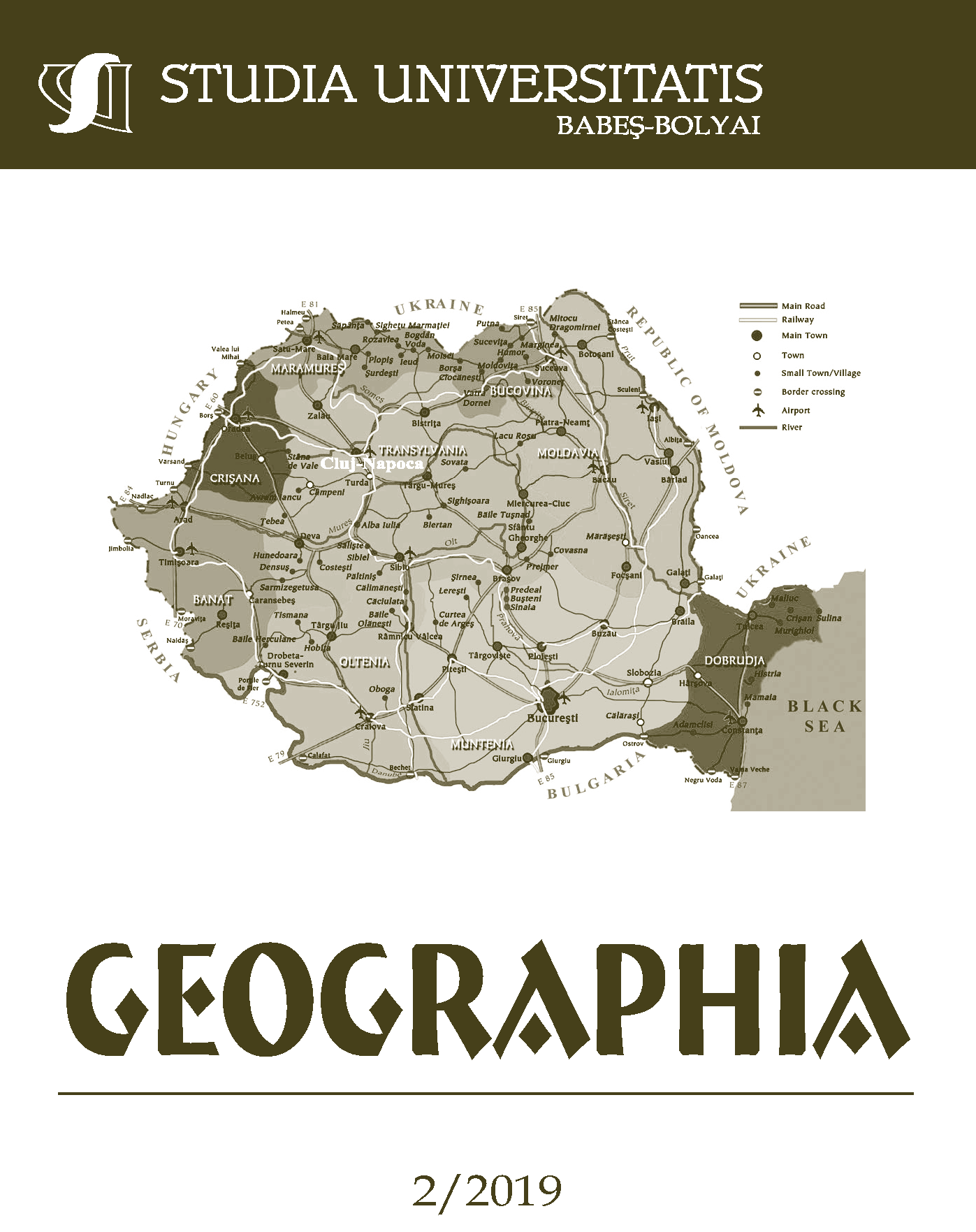THE FIVE-MINUTE-WALK DISTANCE CONCEPT, CASE STUDY: CITY OF CLUJ-NAPOCA, ROMANIA
DOI:
https://doi.org/10.24193/subbgeogr.2019.2.04Keywords:
neighborhood, 5-minute walking distance, urban development, city driving, pedestrian shed.Abstract
This term, also known as the “pedestrian shed”, refers to the distance that would make a person’s option of walking or driving to a destination differ. The distance is visualized as a 400-meter radius area most commonly found in some major cities or capitals’ downtown areas/main areas. To further highlight the characteristics of this concept I applied it on a case study of the city of Cluj-Napoca, checking the adherence of many areas against the concept’s principles. This will display the percentage of studied areas that meet the definition criteria and the results will indicate the proposed collection of measures to be adopted by the local authorities to increase the area definition validity score and to improve the citizens quality of life. This concept could be easily replicated in any city or capital and its metrics could be used to assess citizens.References
Abley, S. (2005), Walkability Scoping Paper, vol. 1, (10 pages), New Zealand Conference, title – Predicting Walkability.
Banerjee, T. and Baer, W. C. (1984), Beyond the Neighborhood Unit: Residential Environments and Public Policy, Plenum Press, New York.
Couch, C. (2016), Urban Planning. An Introduction, Red Globe Press, Macmillan International Higher Education.
https://morphocode.com/the-5-minute-walk/
https://urbanlands.co/2010/08/23/the-five-minute-walk-more-than-just-a-circle/
https://www.conservapedia.com/index.php?title=Clarence_Perry
Diyanah, I.A., Hafazah, A.K. (2012), Implications of Walkability towards Promoting Sustainable Urban Neighborhood, Bangkok Conference on Environment-Behaviour Studies, Elsevier, Ltd. Selec, Thailand.
Filip, S. (2009), Planning Urban, Presa Universitară Clujeană, Cluj-Napoca.
Lynch, K. (2004), Rural-Urban Interaction in the Developing World (6 pages) www.researchgate.net
Moskowitz, P.E. (2018), How to Kill a City: Gentrification, Inequality, and the Fight for the Neighborhood, Bold Type Books.
Speck, J. (2013), Walkable City: How Downtown Can Save America, One Step at a Time, North Point Press.
Sharifi, A. (2013), Sustainiability at the Neighborhood Level: Assessment Tools and the Pursuit of Sustainability, Nagoya University, Department of Environmental Engineering and Architecture (260 pages), www.researchgate.net
Yong, Y. and Diez-Roux, A.V. (2012), Walking Distance by Trip Purpose and Population Subgroup, American Journal of Preventive Medicine, vol. 43.
Downloads
Published
How to Cite
Issue
Section
License
Copyright (c) 2019 Studia Universitatis Babeș-Bolyai Geographia

This work is licensed under a Creative Commons Attribution-NonCommercial-NoDerivatives 4.0 International License.





 ©Studia Universitatis Babeş-Bolyai Geographia. Published by Babeș-Bolyai University.
©Studia Universitatis Babeş-Bolyai Geographia. Published by Babeș-Bolyai University.